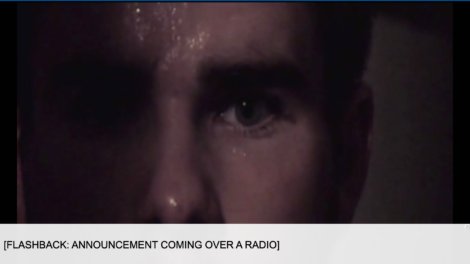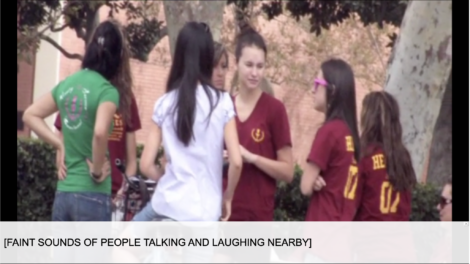Several years ago, I was working on an elearning course to teach police officers about post-traumatic stress disorder (PTSD). I was at the stage where it was time to add captions to the videos we had curated. I had been using a tool called Descript to transcribe the videos, but there was one video that was producing no transcript. Was something wrong with Descript? Maybe there was a problem with the video upload?
It was strange. I seemed to recall that this particular video taught me the most about PTSD when I originally watched it – my favorite video in the course. Something was definitely wrong.
I watched it again. Sure enough, I discovered that the reason there was no transcript was there were no spoken words in the entire video. The effects of PTSD were demonstrated in the video through sounds such as sirens, a door slamming, the sound of fireworks, and other noises that can trigger someone suffering from PTSD. As it turns out, I learned an important lesson that day – the difference between closed captions and subtitles.
While they may seem similar, closed captions and subtitles serve different purposes.
Closed captions are text that is added to a video and can be turned on or off by the viewer. They are often used to provide a transcript of the audio in a video, including spoken words and sound effects where appropriate. This can be particularly useful for viewers who are deaf or hard of hearing, as it allows them to understand the content of the video even if they can’t hear the audio. Closed captions can also be useful for viewers who are watching a video in a noisy environment or who speak a different language than the one used in the video.
Subtitles can also be turned on or off by the viewer. However, the text is a transcript of the spoken words only. They are typically used to translate the spoken words in a video into a different language. This can be particularly useful for viewers who speak a different language than the one used in the video.
When creating instructional videos, closed captions are the better choice. They make the video more accessible and inclusive to a wider range of viewers.
What did that mean for my PTSD video? I needed to create closed captions that described what could be heard throughout, keeping in mind the relevance of those sounds to the content.
Image Descriptions: Two screenshots from a PTSD video. The first is a close-up of male adult with sweat on his brow and a anxious expression with the closed caption “Flashback: Announcement coming over a radio.” The second is a group of young women outside in a park setting talking with the closed caption “Faint sounds of people talking and laughing nearby.”


Important note: at the time of this video’s development, the standard was to write audio closed captions in all capital letters. This is no longer recommended. “A description of sound effects, in brackets, should include the source of the sound. However, the source may be omitted if it can be clearly seen onscreen.”1
Example: [faint sounds of women talking and laughing nearby]
Want to learn how to write closed captions? Here are some great resources:
The Complete Guide to Captioned Videos
How to Add Closed Captions to Your Videos

Thanks for sharing this. Once I read it I realize how obvious the distinction is between the two, yet is something that is rarely discussed. I’ll be considering this more for my future work.
Thanks for the feedback, Tracy! We are glad that you found the information useful.